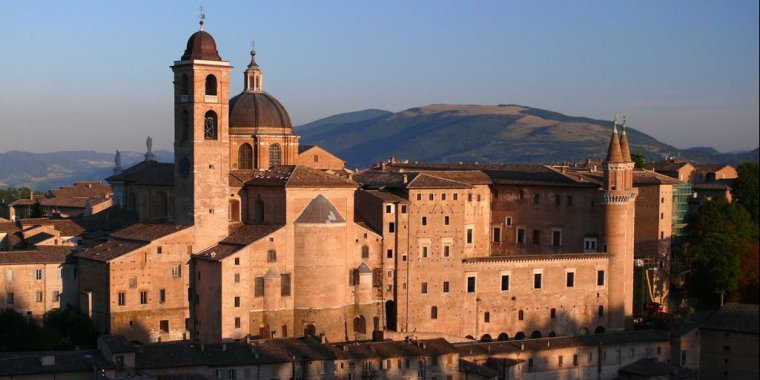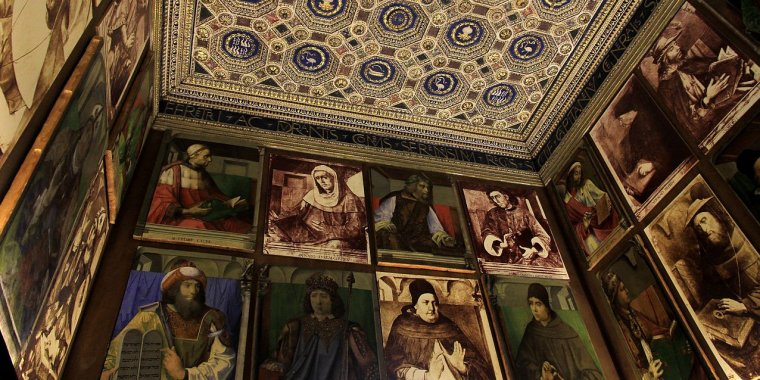| Published in Attractions / Places of Interest |
Ducal Palace, Urbino, Italy
The Ducal Palace (Palazzo Ducale) is a Renaissance building in the Italian city of Urbino in the Marche. One of the most important monuments in Italy, it is listed as UNESCO World Heritage Site since 1998.
The construction of the Ducal Palace was begun for Duke Federico III da Montefeltro around the mid-fifteenth century by the Florentine Maso di Bartolomeo. The new construction included the pre-existing Palace of the Jole. The solid rock hillside salient was impregnable to siege but was problematic for carving out the foundation of a palace.
Thus, a prominent fortress-builder, Luciano Laurana, from Dalmatia, was hired to build the substructure; but Laurana departed Urbino before the living quarters of the palace were begun. After Laurana, the designer or designers of the Ducal Palace are unknown with certainty. Leading High Renaissance architect Donato Bramante was a native of Urbino and may have worked on the completion of the palace.
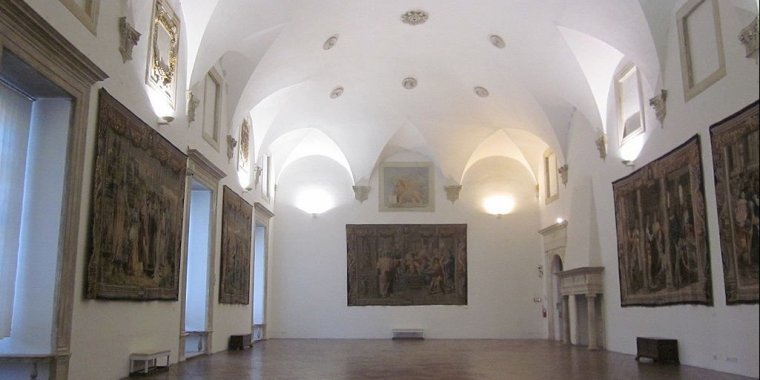
Ducal Palace, Salone del Trono. ![]()
The Ducal Palace is famous as the setting of the conversations which Baldassare Castiglione represents as having taken place in the Hall of Vigils in 1507 in his Book of the Courtier.
The palace continued in use as a government building into the 20th century, housing municipal archives and offices, and public collections of antique inscriptions and sculpture. Restorations completed in 1985 have reopened the extensive subterranean network to visitors.
The Ducal Palace featured several rooms that reflect Federico's devotion to Classical and humanistic studies and served his daily routine, which included visiting the palace's lararium and reading Greek literature. These learned and explicitly pagan touches were atypical of a medieval palazzo.
Studiolo
A central element in this plan is the studiolo (a small study or cabinet for contemplation), a room measuring just 3.60 x 3.35m and facing away from the city of Urbino and towards the Duke's rural lands. Its beautifully executed intarsia work, surrounding the room's occupant with trompe-l'oeil shelves, benches, and half-open latticework doors displaying symbolic objects representing the Liberal Arts, is the single most famous example of this Italian craft of inlay.
The benches hold musical instruments, and the shelves contain representations of books and musical scores, scientific instruments (including an astrolabe and an armillary sphere), study furnishings (including a writing desk and an hourglass), weapons and armor, and various other objects (e.g. parrots in cages and a mazzocchio).
The studiolo also features iconic representations of several persons, both contemporary and historical. On the intarsia panels are depicted statues of Federico in scholarly attire and of Faith, Hope, and Charity. Above the intarsia panels are portraits of great authors by Joos van Wassenhove (with reworking by Pedro Berruguete).
Chapel of Absolution and Temple of the Muses
Downstairs from the studiolo are a twinned pair of chapels, one Christian and one pagan. The vestibule leading to them emphasizes their complementarity with this inscribed elegiac couplet: Bina vides parvo discrimine iuncta sacella: altera pars musis, altera sacra deo est (You see a pair of chapels, joined together with a small separation: the one part is sacred to the Muses, the other sacred to God).
The Temple of the Muses, which may have been used as the personal studiolo of Federico's son Guidobaldo, originally featured paintings of the Muses as "sober musicians" that are perhaps the work of Giovanni Santi.
Galleria Nazionale delle Marche
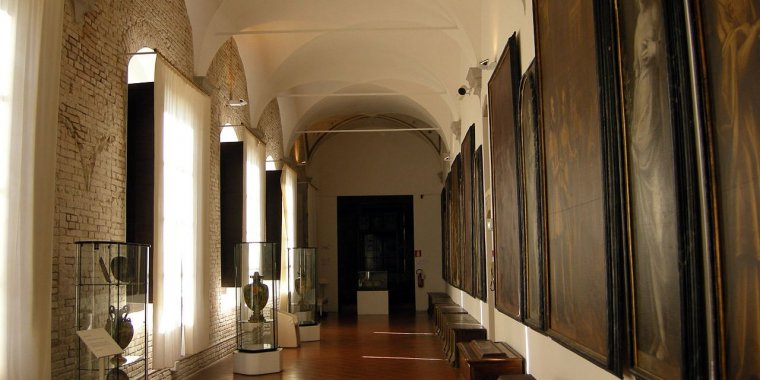
Galleria Nazionale delle Marche. ![]()
The Galleria Nazionale delle Marche (National Gallery of the Marche), housed in the palace, is one of the most important collections of Renaissance art in the world. It includes important works by artists such as Raphael, Van Wassenhove (a Last Supper with portraits of the Montefeltro family and the court), Melozzo da Forlì, Piero della Francesca (with the famous Flagellation), Paolo Uccello, Timoteo Viti, and other 15th century artists, as well as a late Resurrection by Titian.
Tourist Info
Museum Timetable
• Tuesday-Sunday: from 8:30 to 19:15 (ticket office closes at 18:15)
• Monday: from 8:30 to 14:00 (ticket office closes at 13:00)
Closed on: 25 December, 1 January
Address:
Piazza Rinascimento, 13, 61029 Urbino PU.
Admission:
8.00 euro Standard
2.00 euro Concessions
1.00 euro Booking fee
Integrated ticket marche national gallery+castle of gradara: 12.00 euro Standard. Valid for 5 days from the date of issue.
Sources
• www.wikipedia.org
• www.gallerianazionalemarche.it
YOU MAY ALSO LIKE
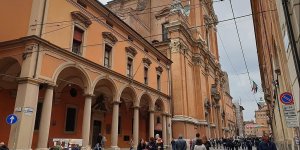





 If you own or manage a travel-related business such as a hotel, a bed-and-breakfast, a restaurant, a pub or a cafeteria, you can create a web page for your business for free on Titi Tudorancea Travel Info. » |
